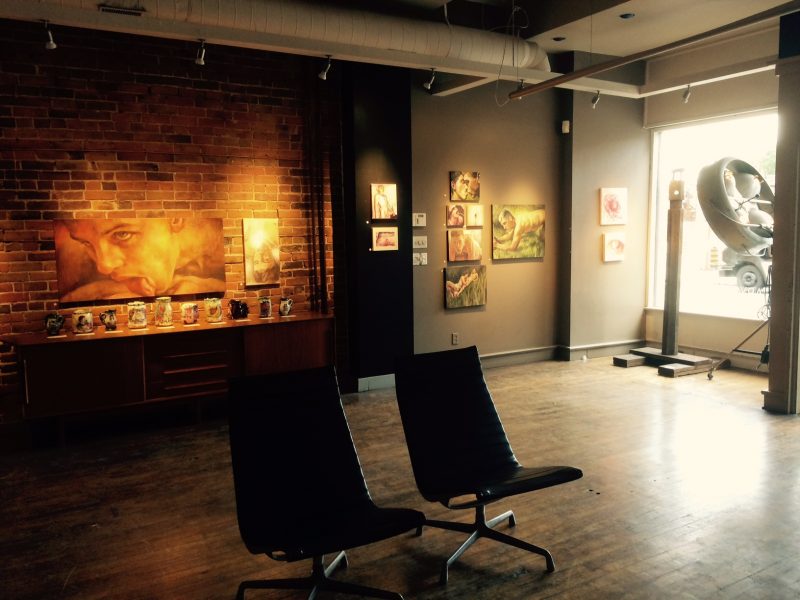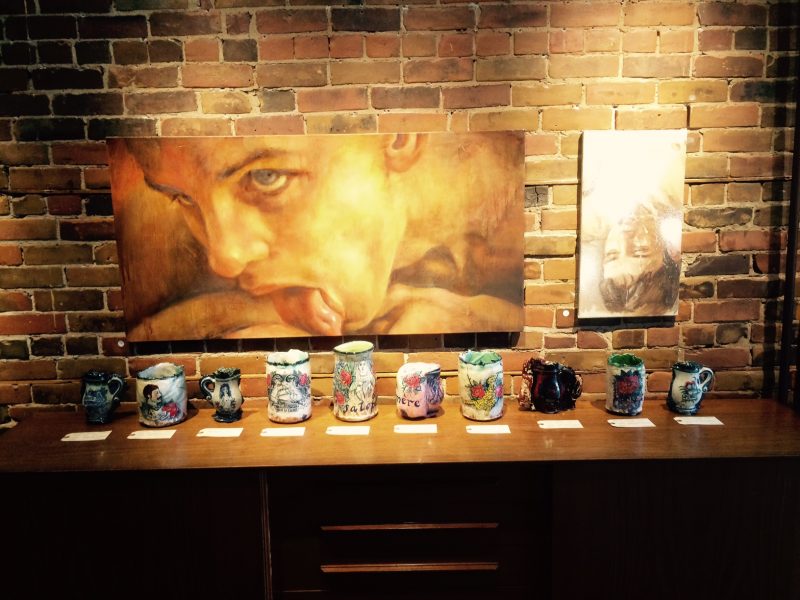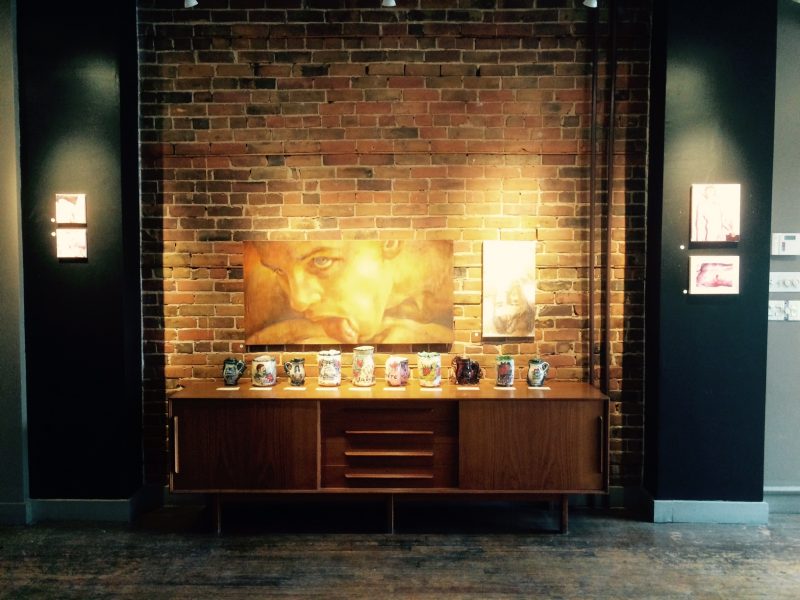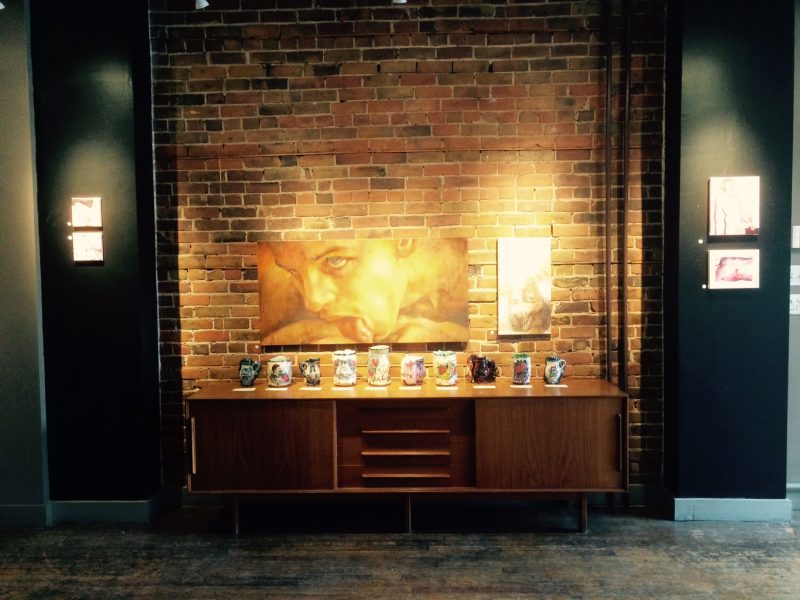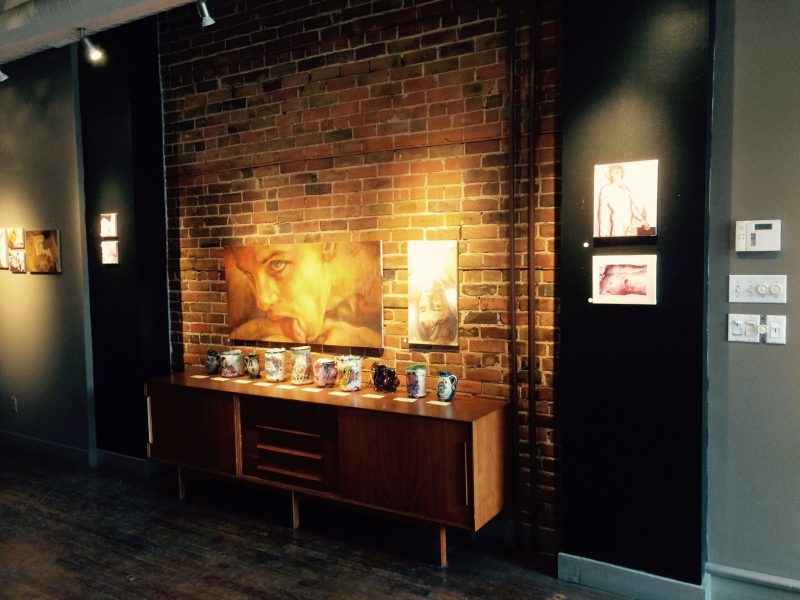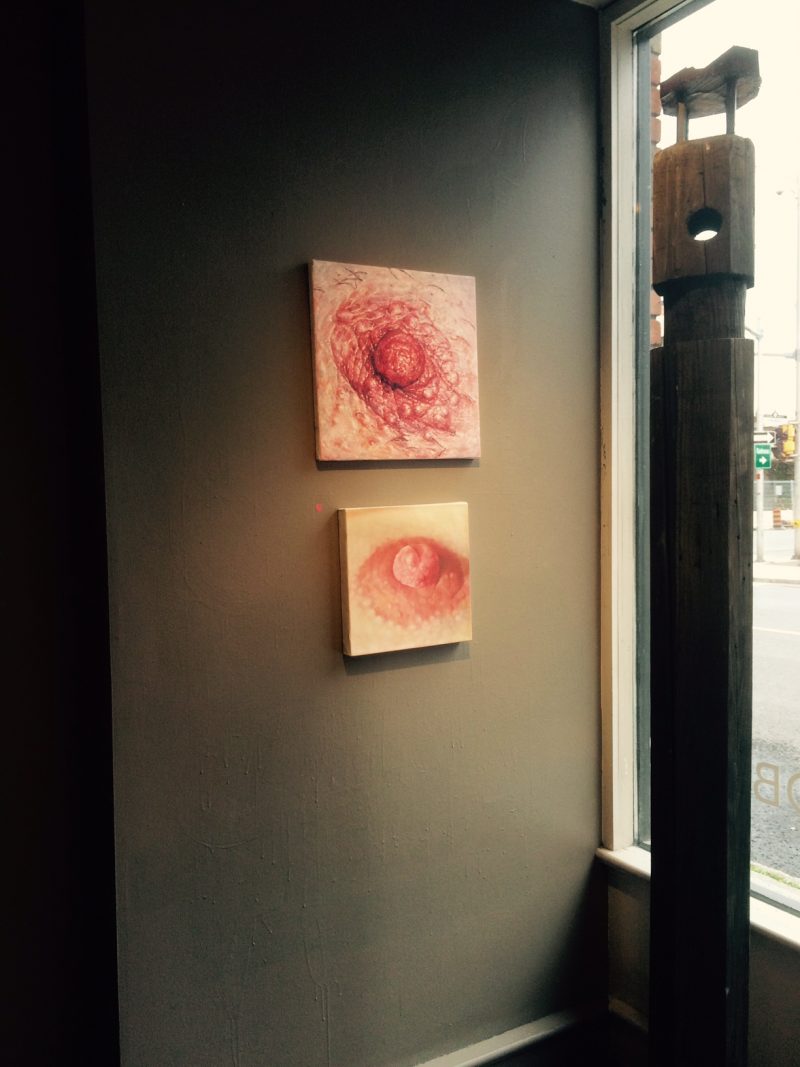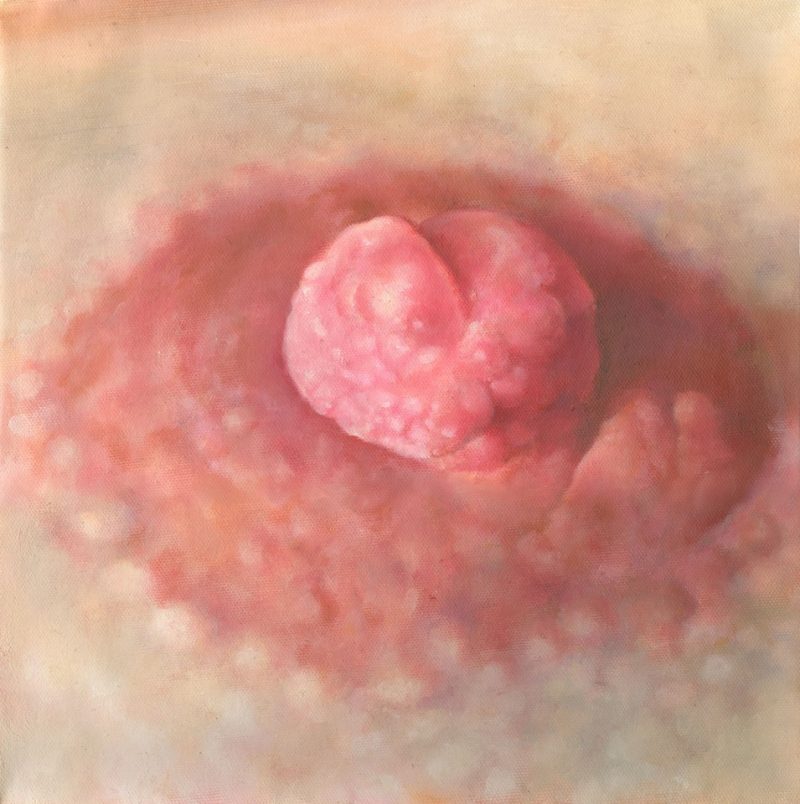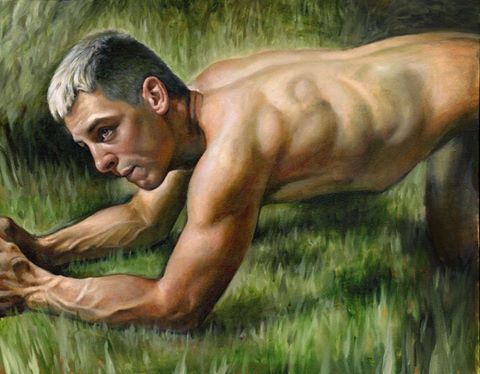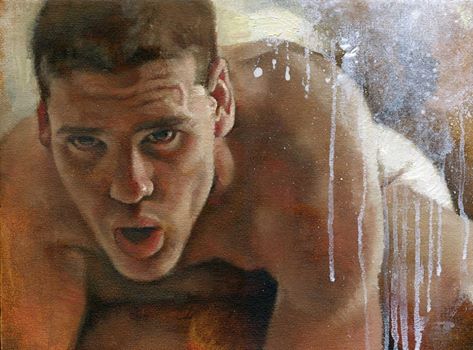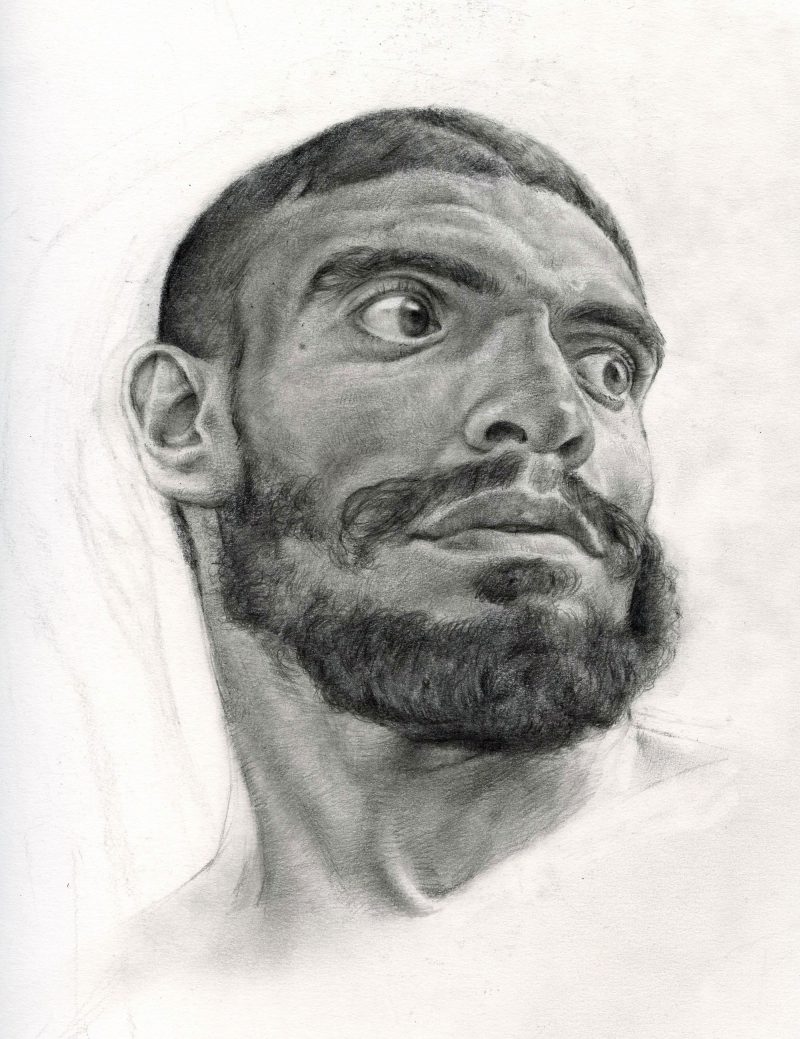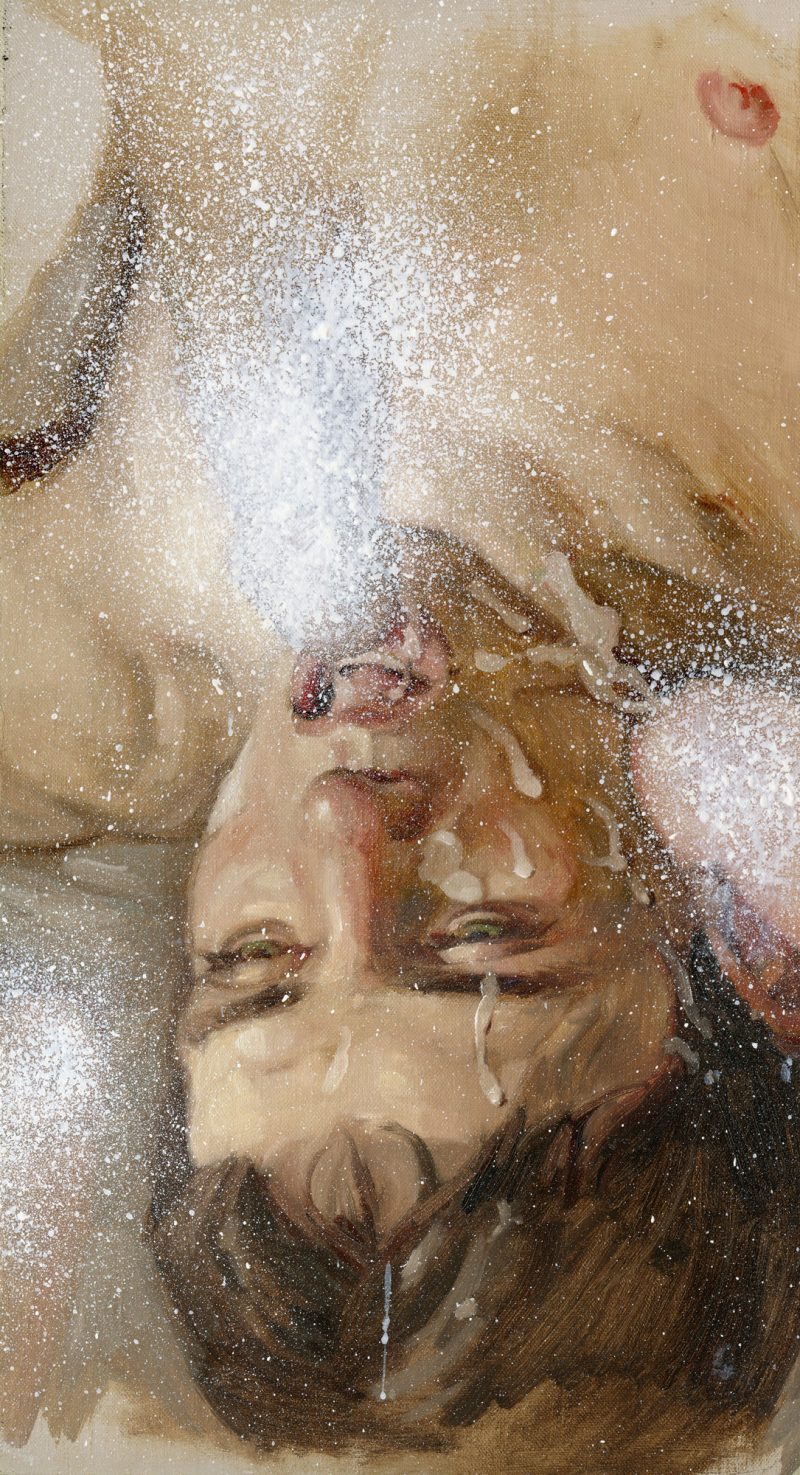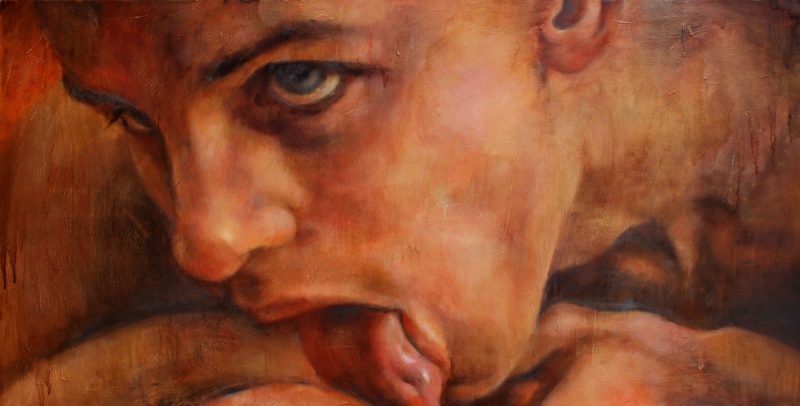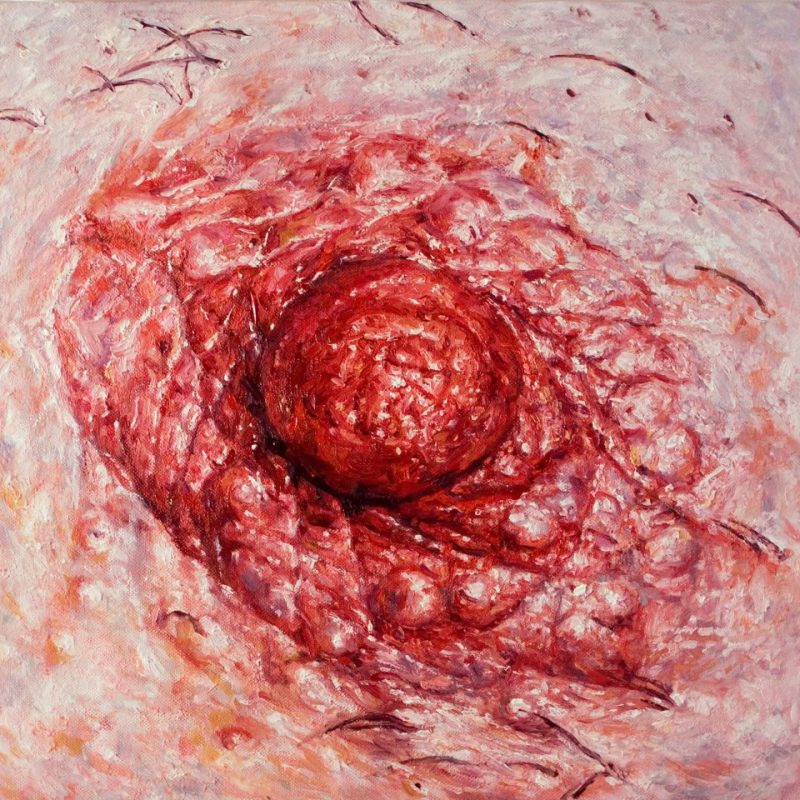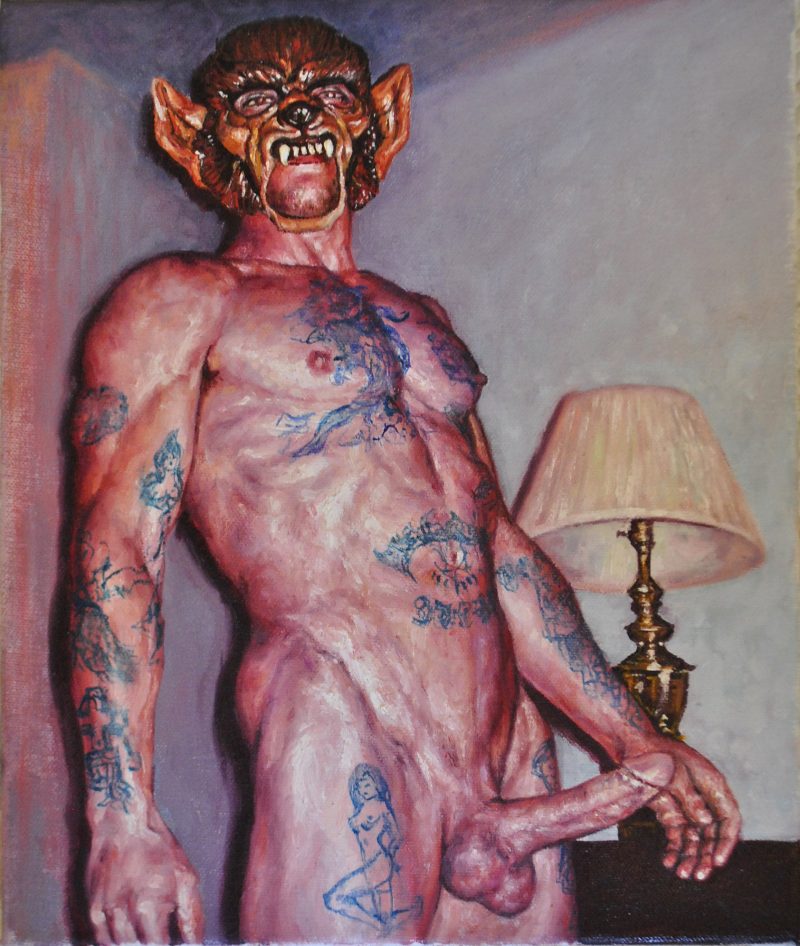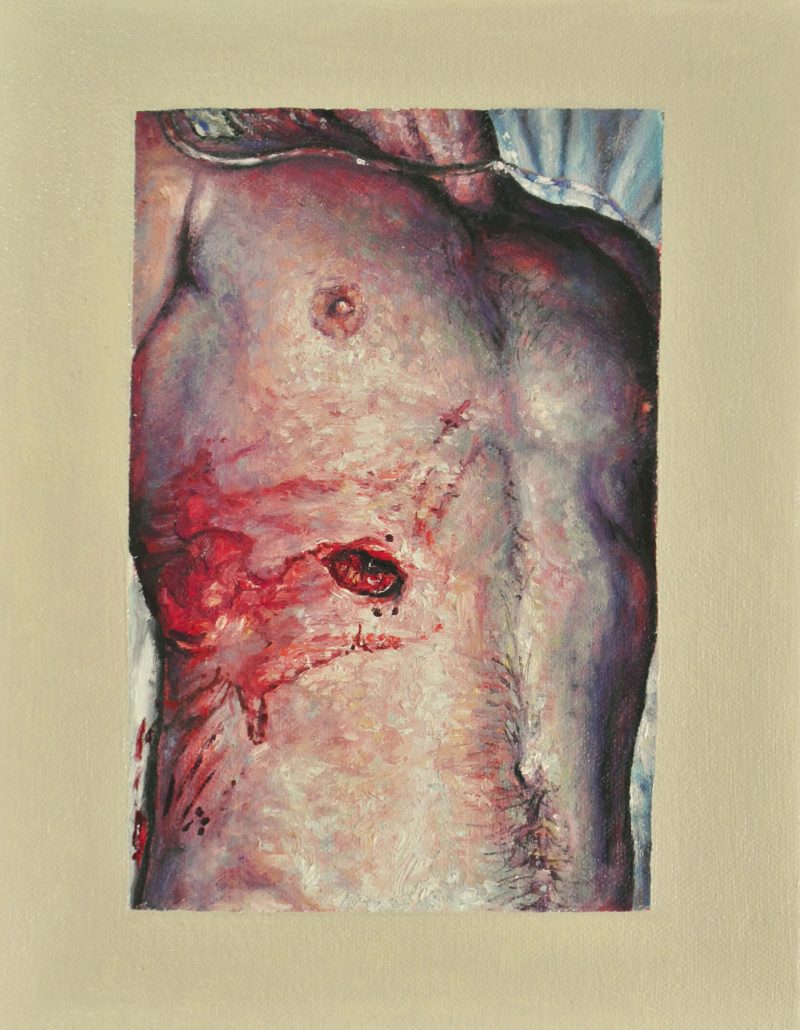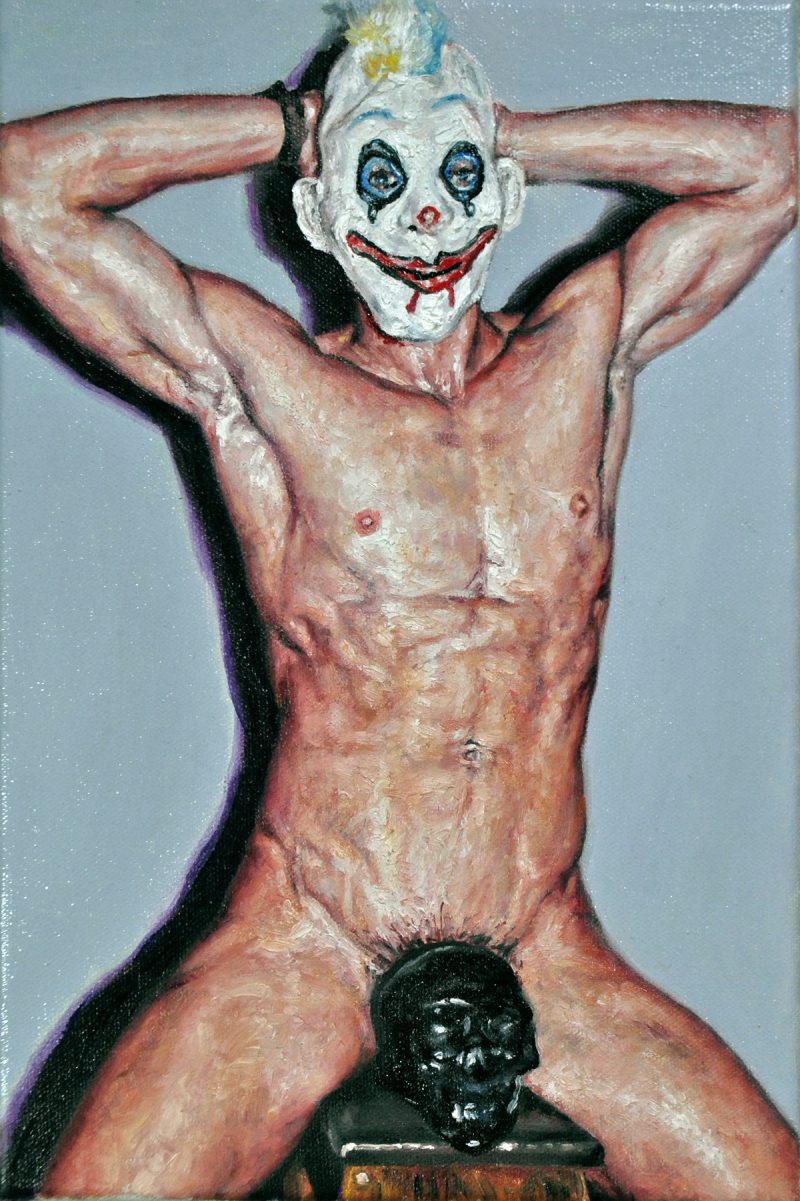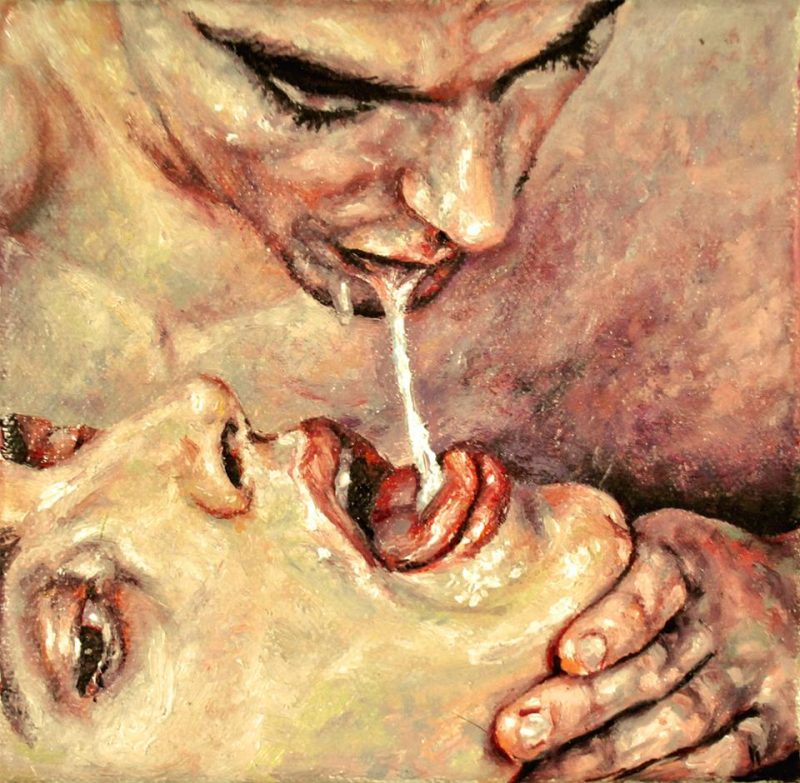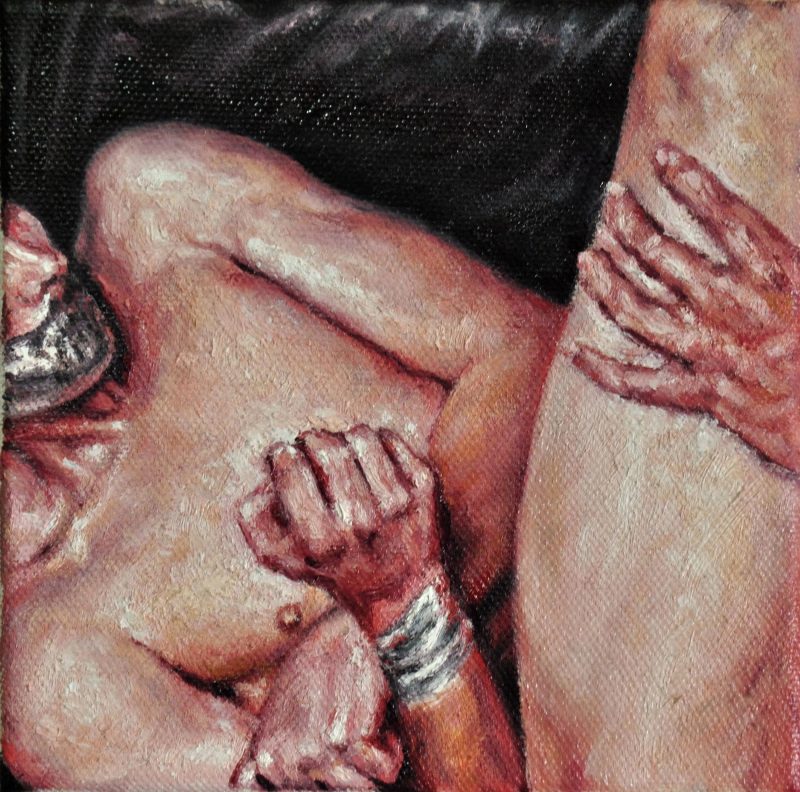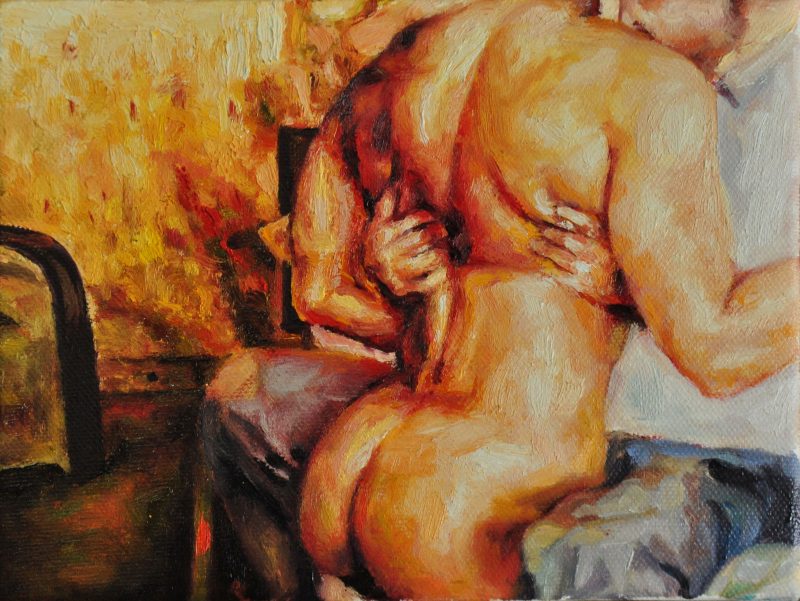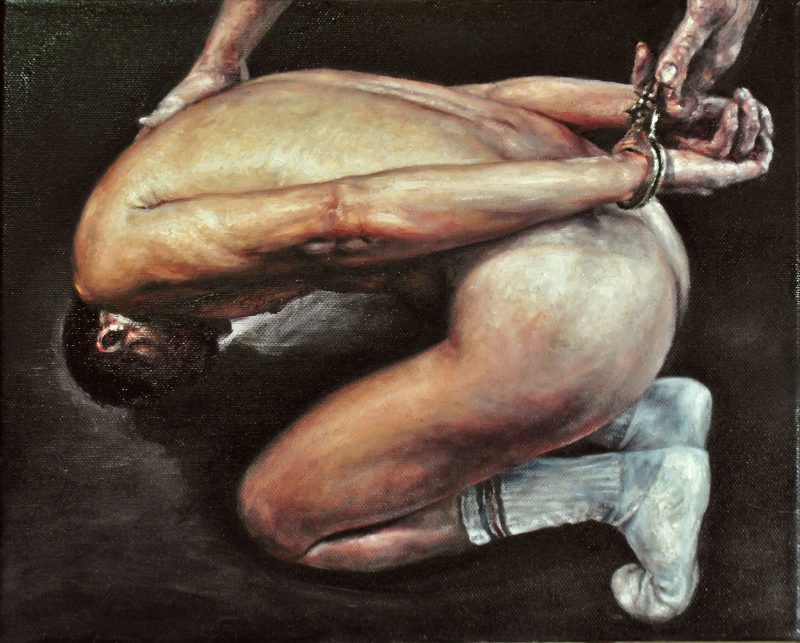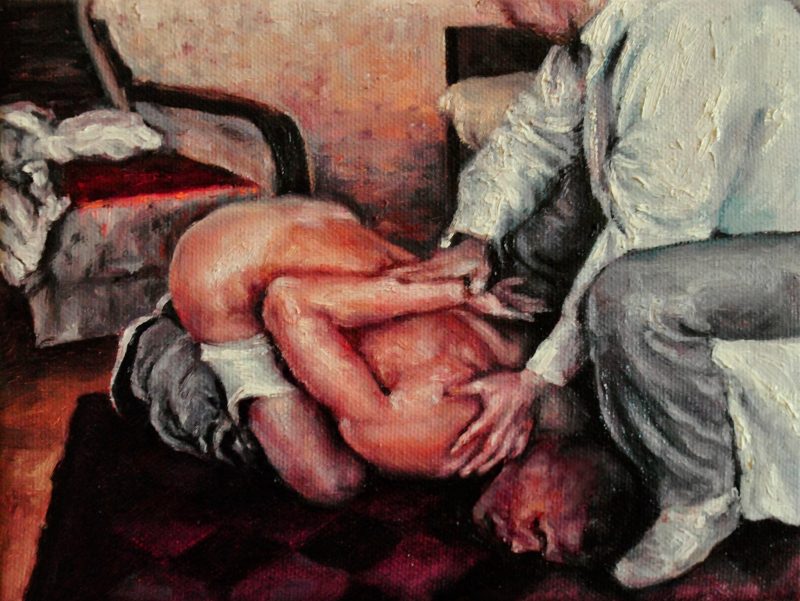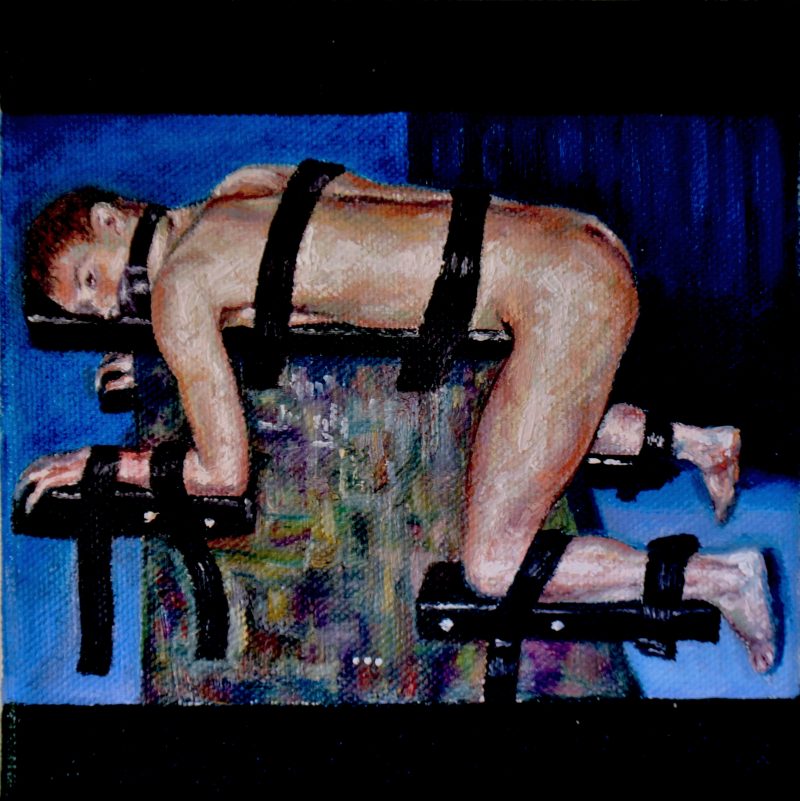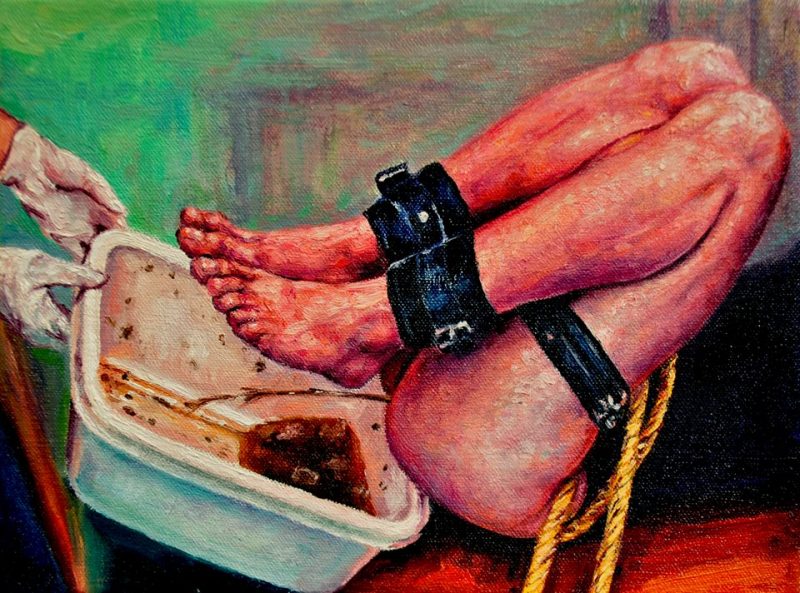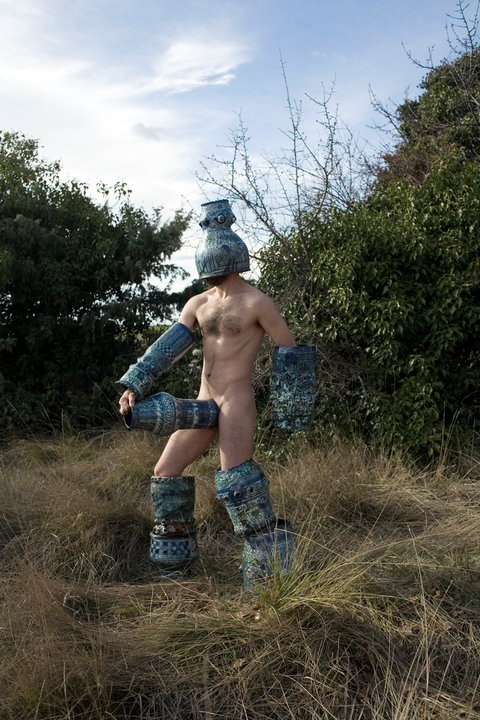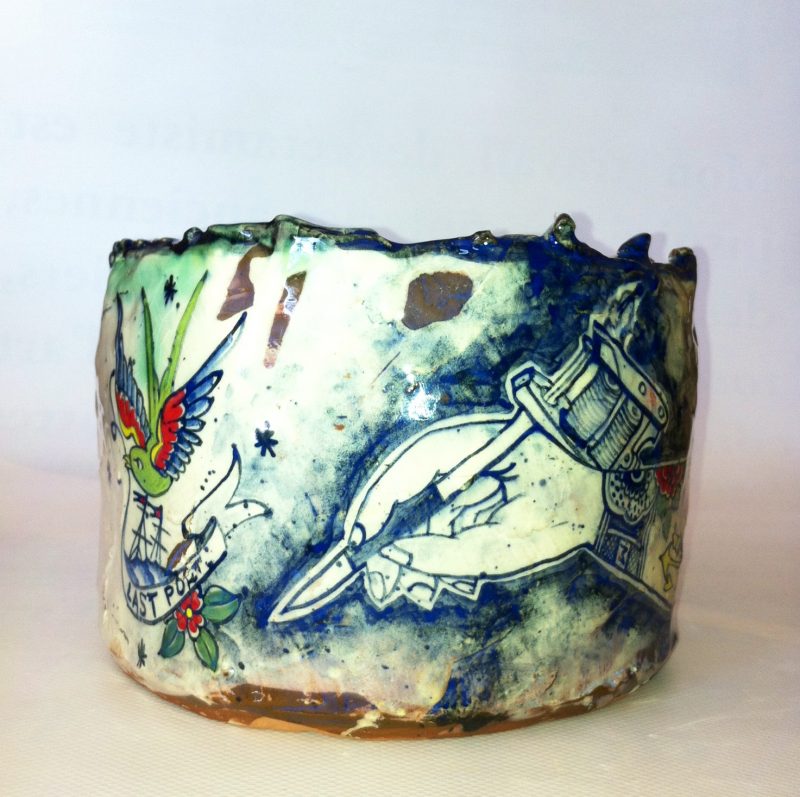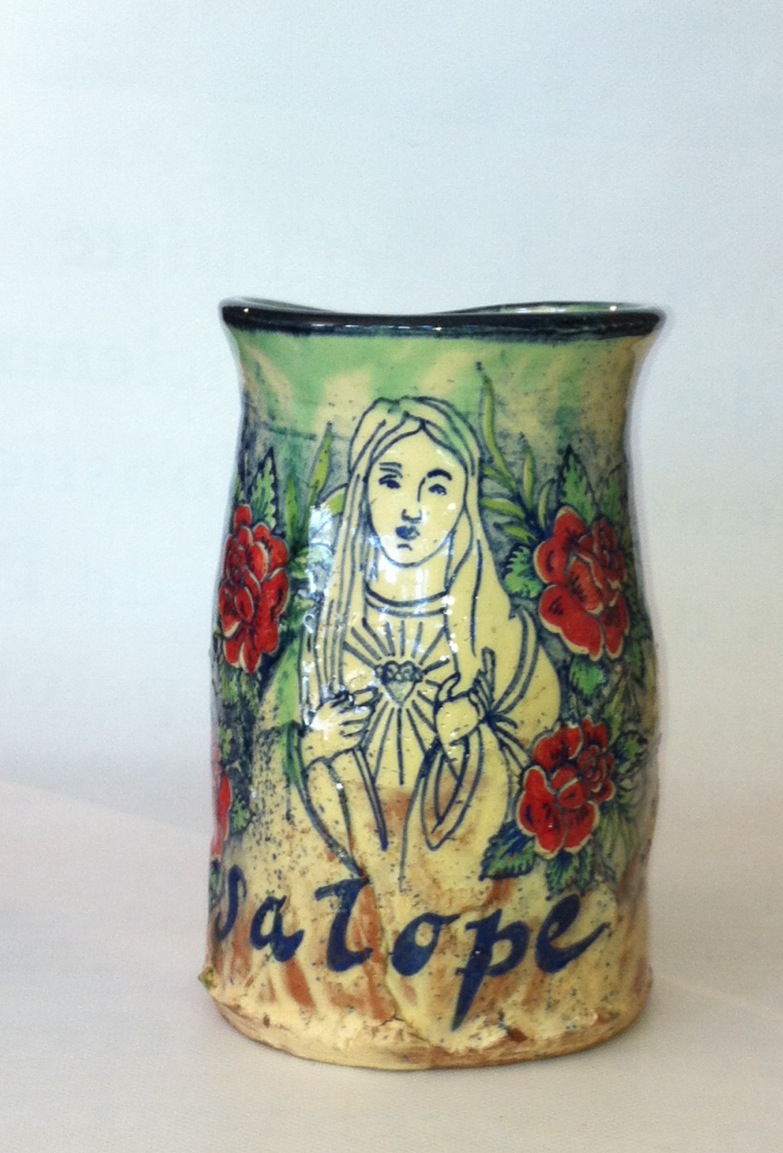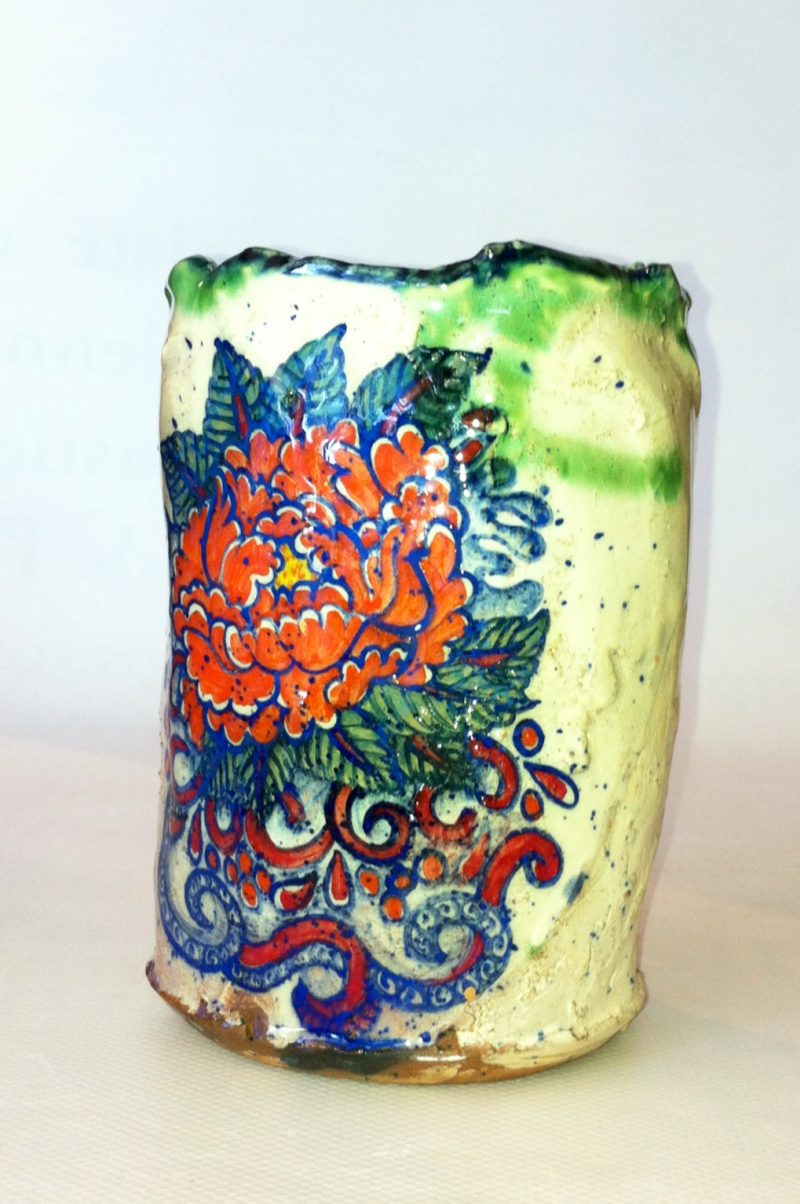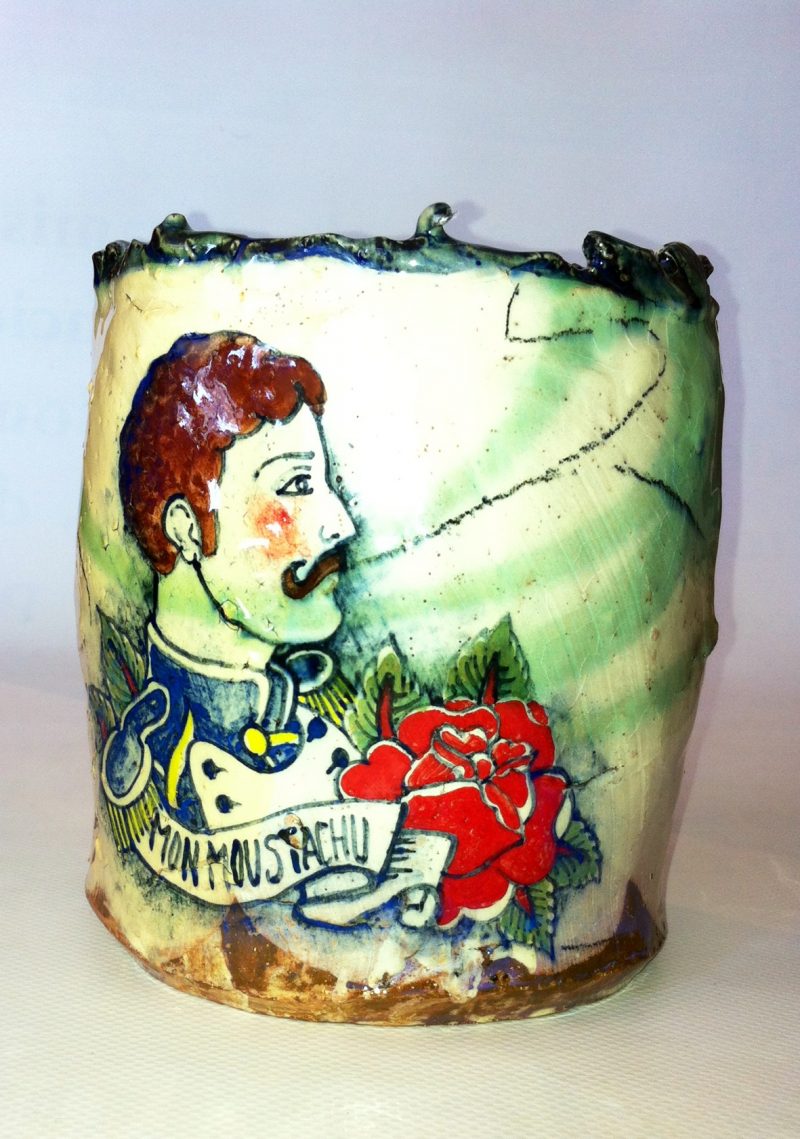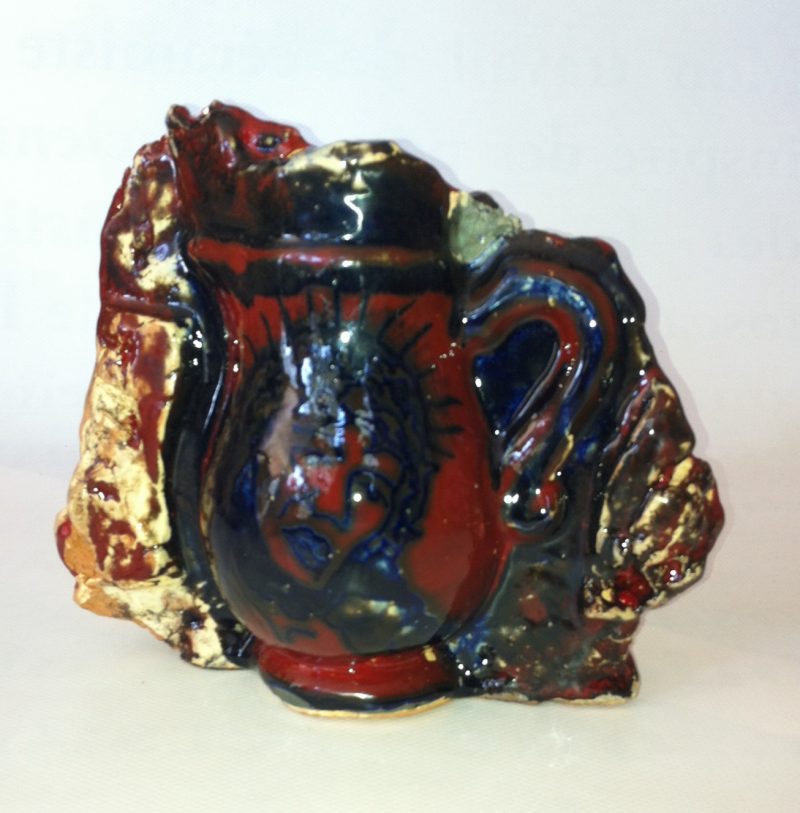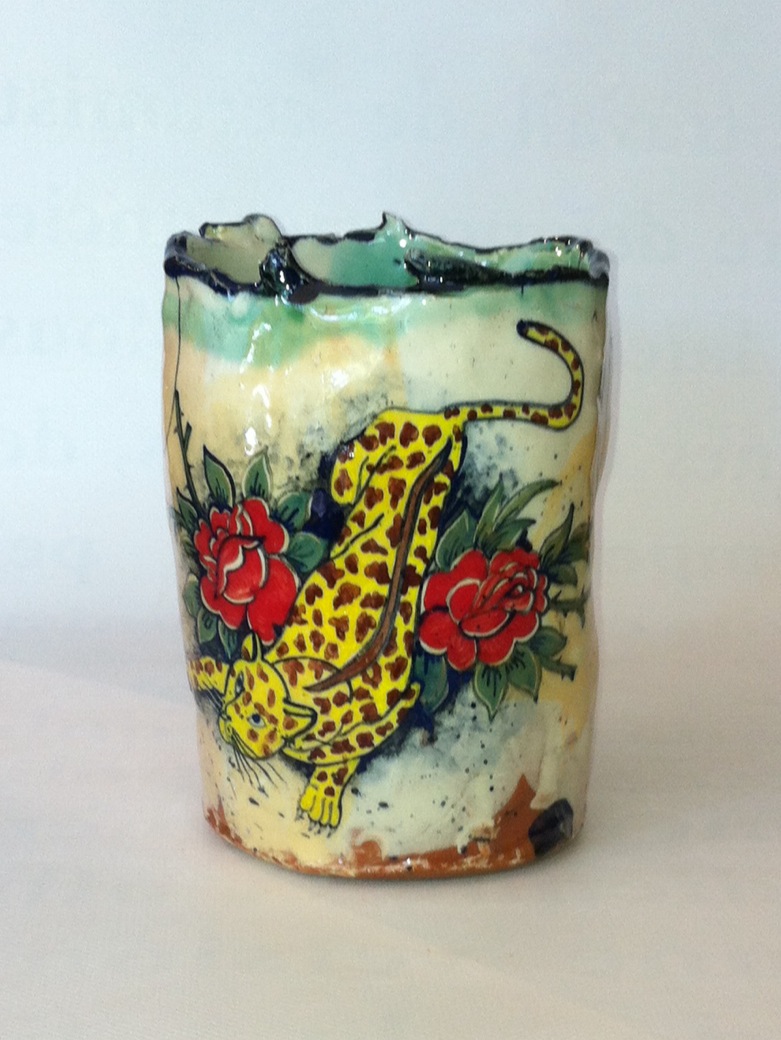October 2014
La Petite Mort Gallery presents
THE REBEL, THE RECRUIT & THE CHOSEN
MATTHEW STRADLING / London (England)
NARUKI KUKITA / New York (USA)
J.G. / Paris (France)
October 3 – November 2, 2014 / Vernissage Friday October 3 / 7 – 10pm
STATEMENT: Written by Adam Barbu for La Petite Mort Gallery.
This exhibition brings together new paintings by Naruki Kukita (New York, USA), Matthew Stradling (London, ENG) and ceramics by J. G. (Paris, FRA) that shift our expectations of bodies and icons into a seemingly distant realm of symbolic darkness.
The rebel, the recruit and the chosen represent three changes of the same face. These figures loosely relate to Kukita, Stradling and G., respectively. In each case, the artist stands in direct, antagonistic dialogue with the histories that shape present conditions. By this selection of works, we ask: What does it mean be chosen by divine authority or recruited among men, and subsequentlyrebelfrom systems of rule? What is the nature of the fragility between resistance and resignation?
Kukita, Stradling and G. capture a certain precariousness of desire that becomes arrested at the site of the body-as-icon, or perhaps, the icon-as-body. In reading these works, we must first consider that the artists work on the manipulation of flesh as a communicative device. The material excess of the body becomes a kind of exchange value; the rebel, the recruit and the chosen all work towards a corrupted economy of flesh. As such, the provocative nature of these works should be figured as a sensuous point of entry, not a distraction. The decisive moment of motive, gesture and situation flash up in a broken contract of lust, loss, liberty and entanglement.
Collectively, these works implicate a certain kind of violence involved in the act of looking. The trust in receiving a pleasurable image becomes broken. We might ask: How is our own sense of desire caught up in the image? How is our position as a stable, safe viewer challenged by the verve, vitality and struggle of these bodies and forms? The passion with which the artists communicate sex, violence, and mutilation with stark visibility becomes a form of displacement in its own right.
Through their distinct formal considerations and processes, Kukita, Stradling and G. push against a threshold of vision without interfering with the basic pleasures, pains and sensitivities of flesh itself. Touch becomes visible, and vision becomes tactile. This close contact to the ‘unreal’ recovers our distance to the representation, implicating the role of viewer not as a neutral bystander, but as a critical component in the construction of this corrupted, yet all too human open circuit of desire.
.
NARUKI KUKITA
MATTHEW STRADLING
Matthew Stradling is represented in many art collections in Europe, America, the Far and Middle East . Born in Hertfordshire in south-east England, Matthew now works from his studio in North London. His work has been exhibited internationally and he has had fifteen solo exhibitions in London, Liverpool and Paris.
Much of Matthew’s work celebrates the sensuality of the human form – figures often luxuriating, nude, against lush decorative backgrounds or sometimes frozen, naked, into empty fields of muted colour.The textures of flesh are captured with the use of layers of delicate colour and the sensitive rendering of light. The paintings often seduce the viewer with a dream-like flow of imagery, a careful attention to detail and an intense use of colour. However they can also challenge us with their serious intent, questioning ideas of sexuality, desire, fear, mortality, and loss. Although much of Matthew’s work depicts fantasies of wealth and splendour, it is not the luxury of a materialistic world that is being celebrated, rather the wealth of the imagination, where the mind is free to gather images from different eras, continents and mythologies, creating visions of beauty that seem to be haunted by their own perfection. In this way, Matthew’s paintings convey a certain melancholic yearning for lost eras and a child-like sense of wonder, underlaid with a knowing sense of humour.
Biography:
Matthew Stradling was born in Hertfordshire, U.K. and moved to London as quickly as possible, where he has stayed for 30 years.
He studied Fine Art at St. Martin’s School of Art in the hayday of the New Romantics and Batcave Goths and calmed down to really get interested in painting during a Masters Degree at the University of Reading. Having left education and encouraged by support from Derek Jarman and Marc Almond Matthew went on to have a seminal exhibition ‘Luxuria’ at the Battersea Art Centre and has continued to exhibitit in London, Paris, New York, Berlin and Ottawa. Still living in London, Matthew works from his studio in Finsbury Park and has recently expanded his creative output into photography and poetry.
J. G. (Paris, FRA)
“Je vais passer ma vie à expérimenter.”
“Je fais de la basse température. De la faïence, de la terre vernissée. Je cuis le tout à 1080°. Je veux des formes spontanées, libres. Je n’aime pas trop les angles. Je veux des décors gestuels et appliqués aussi pour montrer le temps qui passe, son rythme plus exactement. J’aime les pièces mates ou très brillantes, ou les deux. Très colorées ou monochromes. Tout peut changer, tout peut être expérimenté. Ce que j’aime, ce sont les créateurs qui s’expriment, qui ne se cachent pas derrière un travail et qui prennent des risques. Sans aventure, je m’ennuie. J’aime les créateurs ouverts sur plusieurs disciplines. Les puristes m’effraient…”
Après six ans de décoration sur faïence dans les ateliers traditionnels de Moustiers, Jérôme Galvin s’est tourné vers une production personnelle en céramique, gravure et peinture. Il établit une correspondance entre ces trois moyens d’expression.
“Je suis allé d’un atelier à un autre, petit à petit l’ennui est arrivé. Dans le traditionnel je n’apprenais plus grand-chose. Sur un coup de tête, en 98, je m’installe à mon compte dans la ferme familiale entre Moustiers et Sainte-Croix et m’inscris aux beaux-arts de Digne.”
La technique du décor ancien n’aura fait que confirmer sa passion pour le côté graphique.
“La tradition ne m’intéresse que si elle est retranscrite dans le monde contemporain.”
“J’ai toujours aimé les tags sur les murs décrépis, le courrier, les enveloppes, les belles écritures dans les vieux cahiers d’écoliers, les enluminures des grimoires, les histoires de contes et de mythologie, les décors des vieilles faïences bien sûr, les grotesques, l’histoire de l’art, et l’art contemporain. Depuis 1999, j’expérimente la faïence, la terre vernissée. La gravure, la peinture. Les installations, l’espace, depuis peut, la performance me questionne.”
“J’en avais assez de voir la faïence associée au passé, il faut la montrer ouverte, attentive. Mon travail de céramiste, de potier, est inspiré des poteries anciennes en terre vernissée, des faïences de Moustiers, toscanes ou orientales, de l’art contemporain, des peintres abstraits et expressionnistes. Le geste, la fraîcheur de tout ça… Mais en fin de compte, ce que je montre est toujours lié à ce que je vis, je me montre, je parle beaucoup de moi dans mon travail, sans complexe. Je peux aussi, à l’inverse, être décoratif.”
Spontané et réfléchi, impulsif et maîtrisé, la liste est longue.
“Un côté artisan-artiste, que je cultive avec plaisir. Parler de moi c’est parler des autres, je ne suis pas exceptionnel. J’ai choisi l’art, je continue.”
